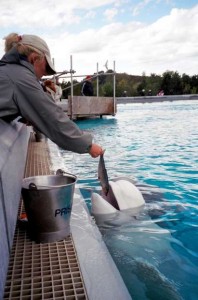By Julia Grabowska
Community Safety Minister Madeleine Meilleur was at High Park Zoo this morning to announce new efforts to protect the welfare of animals in Ontario.
The reforms are planned to focus on zoos, aquariums as well as puppy and kitten mills.
Meilleur announced that more power and money will be given to the Ontario Society for the Prevention of Cruelty to Animals in order to increase inspections. The OSPCA will receive $5.5 million per year as opposed to the $500,000 that they currently receive from the government.
Neva Novakovic, a representative for Animal Justice Canada, said that the money that the OSPCA is receiving currently is proving to be not enough.
“The money was being shared between investigations and the sheltering of animals,” Novakovic said.
“The investigations were using most of the money not leaving much for shelters. It’s a great thing that there will be more money for the OSPCA and that marine mammals will be included in the OSPCA’s job.”
The Canadian Federation of Humane Societies was one of the groups consulted prior to the announcement this morning.
Kim Elmslie, communications and advocacy manager with the Federation, said they are in favour of the enforcement of regulations and additional funding for the OSPCA.
“In terms of marine mammals, we are fully supportive of the ban on keeping them in captivity as opposed to setting more regulations, but we applaud regulations because we don’t have any for the zoos,” she said.
“The OSPCA has authority to do investigations, and anything that strengthens and expands the ability to do investigations is great. One of the problems we see with exotic animals, you can quickly get out of the expertise of them, and then having to pay for an expert to come in can be quite costly, and then possibly relocating the animals becomes costly.”
Elmslie also brought up the issue of the distribution of information between zoos and the public.
“There is no transparency as to what’s happening. We would like to see full disclosure of what exactly they (zoos) have in their inventory, like if an animal is sick, born, or brought in,” she added.
Additional measures such as an emergency hot line will be available for people to report cases of animal abuse, and bi-annual surprise visits.


